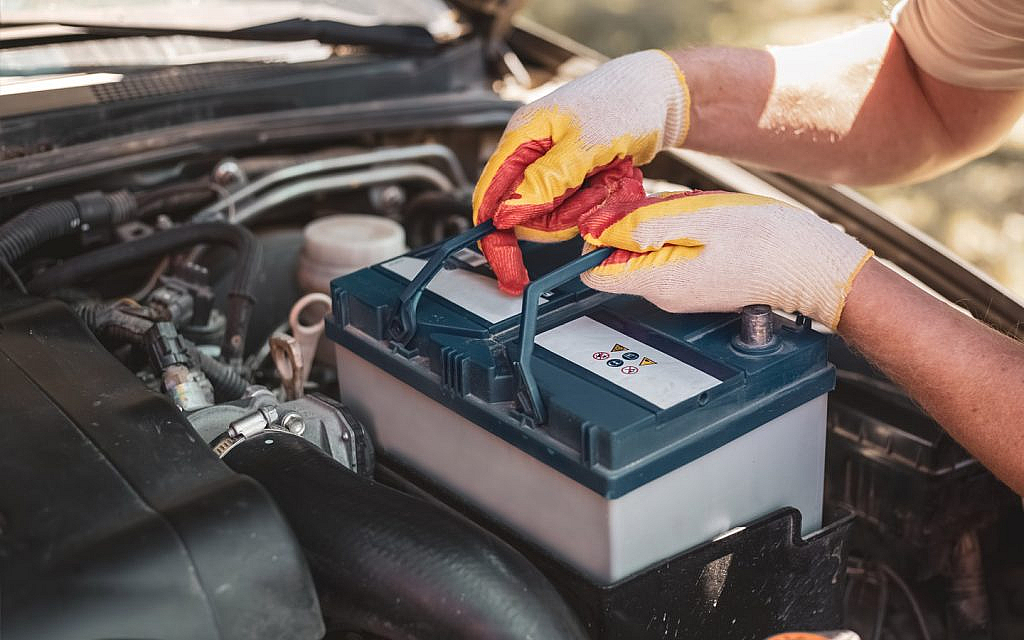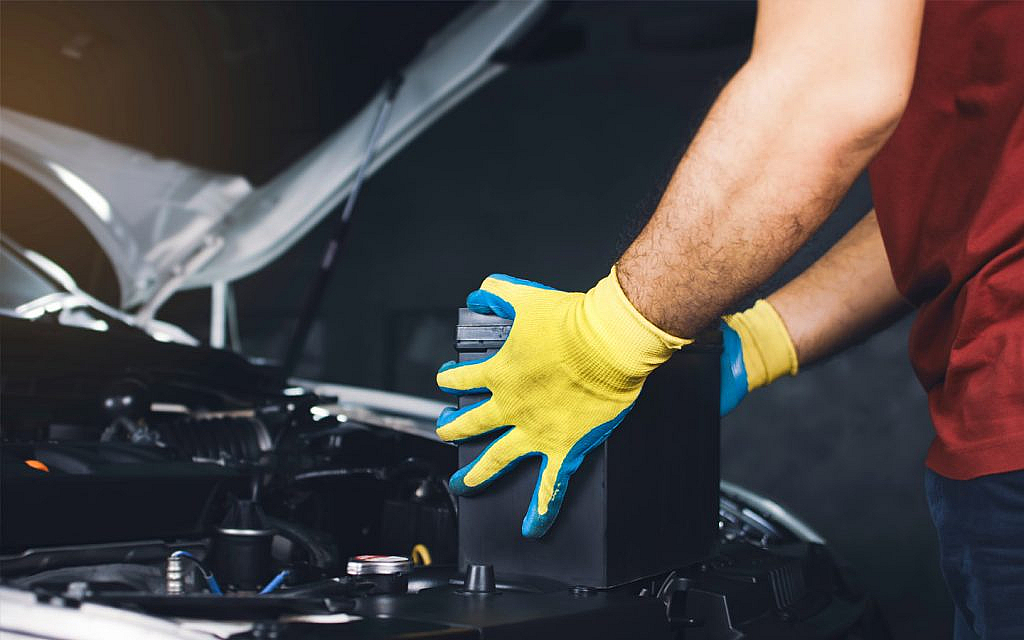All About Car Battery Hold Down
- What is Car Battery Hold Down
- Benefits of Battery Hold Down
- Types of Battery Hold Down
- Tips to Choose Battery Hold Down
- Installation and Maintenance
- FAQs
A damaged car battery can be one of the most hazardous components in your vehicle. Beyond causing issues like stalling and ignition failure, a loose or improperly secured battery can spark a fire. To mitigate these risks, securing the battery with a reliable car battery hold down is crucial. It is a critical component of your vehicle’s battery system, often overlooked but essential for maintaining battery performance and safety.
Let’s further explore what battery hold downs are, their benefits, the available types and important considerations to keep in mind regarding their usage.
What Is a Car Battery Hold Down

A car battery hold down is designed to secure the battery within its designated compartment. It typically consists of a metal bracket or strap that presses down on the battery, preventing it from moving or vibrating. This simple yet crucial component helps ensure the battery remains stable, which is vital for properly functioning your vehicle’s electrical system.
Benefits of Using a Car Battery Hold Down
Let’s find out the essential car battery hold down benefits.
Improved Vibration Resistance
Car batteries are sensitive to vibrations. If a battery isn’t held securely, it can be subject to excessive shocks. Excessive movement can lead to physical damage to the battery or its connections, potentially causing electrical failures or leaks. A properly installed hold down mitigates these vibrations, enhancing the battery’s overall durability and reliability.
Enhanced Battery Safety
A battery that isn’t properly secured can move around, potentially causing friction and damage. In severe cases, this movement can result in the battery terminals making contact with exposed metal, posing a fire hazard.
By securely holding the battery in place, a battery hold down minimises the risk of the battery getting loose during driving. This reduces the chance of car short circuit, battery acid spills or other hazards that could pose a safety risk.
Better Electrical Connectivity
Properly securing the battery with a hold down ensures the battery terminals maintain a stable connection with the vehicle’s electrical system. This stable connection leads to a smoother car ignition system, improved vehicle performance, better fuel efficiency and a longer lifespan for other electrical components.
Extended Battery Lifespan
The combined benefits of reduced movement, minimised vibration and stable electrical connectivity contribute to a longer battery life. A secure hold down helps minimise these issues, potentially extending the battery’s lifespan. Besides, you can also use these tips to extend car battery life and enjoy optimal performance.
Types of Car Battery Hold Downs

Battery hold downs come in various forms, each serving the same fundamental purpose but in different ways. Here are some of the common car battery hold down types:
Battery Hold Down Bolt
A battery hold down bolt is the most common type. This uses j-bolts made from heavy-duty steel to secure the battery. The j-bolts act as a car battery holder clamp, holding the battery firmly in place. Most kits include j-bolts, washers and nuts for installation. Depending on your battery setup, you may need to adjust the size of the bolts. Metal brackets are durable and provide a robust hold, making them suitable for most vehicles.
Plastic Hold Downs
Plastic battery hold downs are lightweight and often used in vehicles where weight reduction is a priority. They are usually made from high-strength plastic or composite materials. While they may not be as durable as metal, they are often sufficient for everyday use.
Rubber Straps
Rubber battery hold downs are flexible and can conform to the shape of the battery. They are often used in vehicles with non-standard battery sizes or in situations where vibration absorption is important. Rubber straps can be easy to install and remove, making them a convenient option.
Battery Tie Down Strap
Tie-down straps offer a more flexible solution. They use straps to secure the battery and are relatively easy to remove if needed. These straps do not make contact with the battery terminals, reducing the risk of short circuits.
Custom Hold Downs
For specific applications, custom battery hold downs can be designed and manufactured to meet unique requirements. These are often used in high-performance or modified vehicles where standard hold downs may not be suitable. You can also check car battery performance by following these tips.
How to Choose the Right Car Battery Hold Down
When selecting a battery hold down, consider the following factors:
Battery Type
Different batteries have different sizes and requirements. Ensure the hold down you choose is compatible with your battery’s size and type. For instance, lithium-ion batteries are known for their durability and might require specific hold down options.
Fit and Size
The fit is crucial for effective battery security. An improperly sized hold down will not secure the battery adequately, potentially leading to issues. Verify the fit of the hold down before purchasing to avoid potential problems.
Material
Hold downs are commonly made from plastic, which is affordable and effective for many applications. Other materials include steel and aluminium alloy, which may offer enhanced durability depending on your needs.
Installation and Maintenance
Proper installation of a car battery hold down is essential for its effectiveness. Follow these general steps for installation:
- Ensure Compatibility: Verify that the battery hold down is compatible with your vehicle’s battery size and compartment.
- Position the Battery: Place the battery in its compartment and ensure it is correctly aligned with the hold down brackets.
- Secure the Hold Down: Attach the hold down bracket or strap according to the manufacturer’s instructions. Make sure it is tightened securely but avoid overtightening, which could damage the battery or its terminals.
- Check Regularly: Periodically inspect the battery hold down to ensure it remains securely in place. Check for any signs of wear or damage and replace the hold down if necessary. Besides, you can also use these tips to deal with electronic issues after replacing the car’s battery.
Consequences of a Loose Battery Hold Down
A loose battery hold down can lead to several problems:
Potential Fire Hazard
A battery that moves around can cause the positive and negative terminals to come into contact with exposed metal, potentially igniting a fire. This risk is especially high if the vehicle frequently encounters rough terrain or potholes. If you own an EV, here are some useful tips that will prevent your EV from catching fire.
Risk of Short Circuits
An unsecured battery can place additional strain on the battery cables, increasing the likelihood of short circuits. This can lead to stalling, overheating and potentially dangerous sparks that could cause a fire or electric shock. Also, keep an eye on these reasons why your car engine keeps stalling.
FAQs
What is the function of a car battery hold down?
The primary function of a car battery hold down is to secure the battery in place within its compartment, preventing it from shifting or vibrating.
How Often Should You Check the Battery Hold Down?
It’s advisable to inspect your battery hold downs at least quarterly. Additionally, it’s a good practice to check them whenever you perform other monthly scheduled car battery maintenance.
A car battery hold down may seem like a minor component, but its role in securing the battery and maintaining vehicle safety is crucial. By understanding the different types of hold downs and their benefits, you can make an informed choice for your vehicle.
If you are planning to buy a vehicle with the latest features, browse through the listings of used cars for sale in the UAE. For newly launched cars, you can head to new cars for sale in the UAE.
If you have any more questions about car batteries, check out dubizzle cars blog.
Comments
Post a Comment